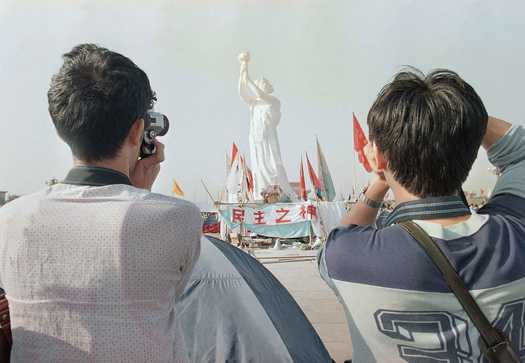Go to this page and check out the PDF file. This is not a summary of all those who were killed and wounded, just a sliver. The report was released in Chinese last year and the English translation was made available today. From the summary:
Compiled from available information, including the Tiananmen Mothers’ database, as well as in-person interviews, the report tells the stories of 195 people who were killed in the June Fourth crackdown, and provides information on 57 people who were wounded or disabled, and more than 800 individuals who have been imprisoned or detained in Reeducation-Through-Labor institutions for offenses related to the crackdown in more than a dozen provinces, including the seven people still in prison today….
“This report is an invaluable resource for those who want to understand the on-going human costs of the June Fourth crackdown, and an important tool for promoting official accountability,” said Sharon Hom, Executive Director of HRIC.
Those killed were men, women and children from all walks of life, including students, peasants, truck drivers, performers, engineers, peddlers and even a party secretary and deputy to the Beijing People’s Congress. They were from major cities like Beijing and Shanghai, and as far away as Liaoning Province. The report provides their personal details: names, ages, home locations, occupations, circumstances surrounding their deaths, family backgrounds, and information on surviving family members.
The youngest victim was Lu Peng, a 9-year-old third grade student (#34) who was shot in the chest by martial law troops around midnight, June 3-4, and died immediately. The oldest was Zhang Fuyuan, a 66-year-old retired hospital worker and Communist Party member (#166) who was working as a guard in a construction site of the Design Institute of the Ministry of Metallurgical Industry. On the evening of June 3, Zhang was among a group of residents near Changanjie who were chased and fired upon by martial law troops as they ran into a hutong.
Other victims include Zhang Jian, 17-year-old high school student (#181) who was shot in the heart by soldiers on his way to see his uncle and aunt on June 4 and was dead on arrival at the Peking Union Medical college Hospital; and Dai Wei, a 20-year-old cook in the Beijing Roast Duck Restaurant (#42) who was shot in the back on his way to work on the evening of June 3 and died in the early morning of June 4 in the Post and Communications Hospital.
In the report, Jiang tells of families of the dead who never received any compensation or even official accounts of how their loved ones died. These families have never even been allowed to openly mourn their deaths.
As for the living, the report provides the names of the more than 800 prisoners identified, and more detailed information on many of them, such as lengths and types of sentences and locations of imprisonment, offenses of which they were convicted, and age, occupation, home location and other personal details. The report also tells the story of many who have been released from prison but have not been able to find work, and continue to suffer economically, politically and psychologically.
Human Rights in China urges the Chinese authorities to respond to the appeal in this report for an official re-examination of the events and to the Tiananmen Mothers’ call for investigation, compensation, accountability, and dialogue.
To my friends who find this dull, repetitious and water under the bridge, please move on. For me, this remains an open wound, and as long as the CCP keeps stonewalling, the much beloved phrase “Reform and Opening Up” will ring at least partially hollow. Those who keep demanding more contrition from the Japanese for their crimes against humanity should demand the same from their own rulers. I’m not saying the TSM was anywhere near the scale of the Nanjing Massacre, but murder is murder.
Update: Amnesty International’s blog tells us what’s going on in Hong Kong today:
Commemorative activities organized by the Hong Kong Alliance in Support of Patriotic Democratic Movements in China (The Alliance) were brought to an abrupt halt by police on May 29th and 30th.
The organizers had followed procedures for regulating public assemblies, but the police claimed additional ‘entertainment’ licenses were required, confiscated exhibits including two statues of the Goddess of Democracy and arrested 15 people.
Amnesty released a public statement commemorating today’s anniversary, in which we condemned the Chinese authorities’ efforts to cover up the massacre and bring those responsible into investigation. Furthermore, we continue to urge the Chinese government to stop suppressing citizens who exercise their fundamental rights to freedom of expression.
Three cheers for One Country, Two Systems.


Comments